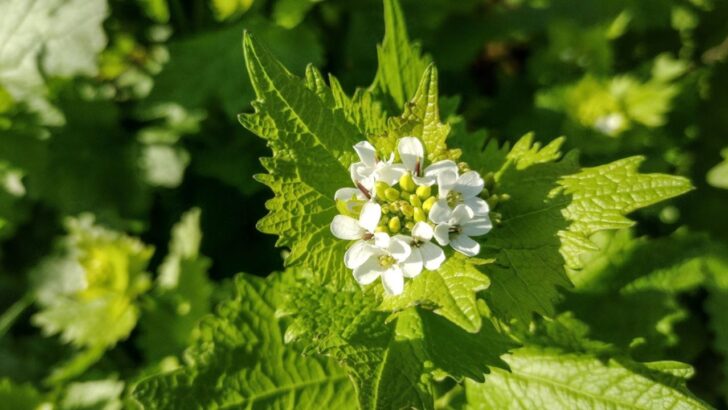From the coast to mountains and from mild climates to nearly arctic conditions, Maine encompasses more than a hundred types of habitats, home to some 1,500 native plants. Unfortunately, these varied habitats also provide ideal conditions for a wide range of non-native invasive species. The Maine Department of Agriculture, Conservation, and Forestry lists 125 invasive plants in Maine on its Advisory List.
While this number may seem overwhelming, I have compared their invasive plant gallery with resources from the Maine Invasive Species Network to compile a more manageable list of 11 of the worst invasive plants in the state. Learn how to identify and control these noxious weeds in your backyard, and choose equally beautiful native plants for your landscape to nurture the diverse habitats of Maine.
Here’s a list of 11 stunning Maine native plants for your landscape.
Invasive Plants in Maine- 1. Asiatic Bittersweet (Celastrus orbiculata)
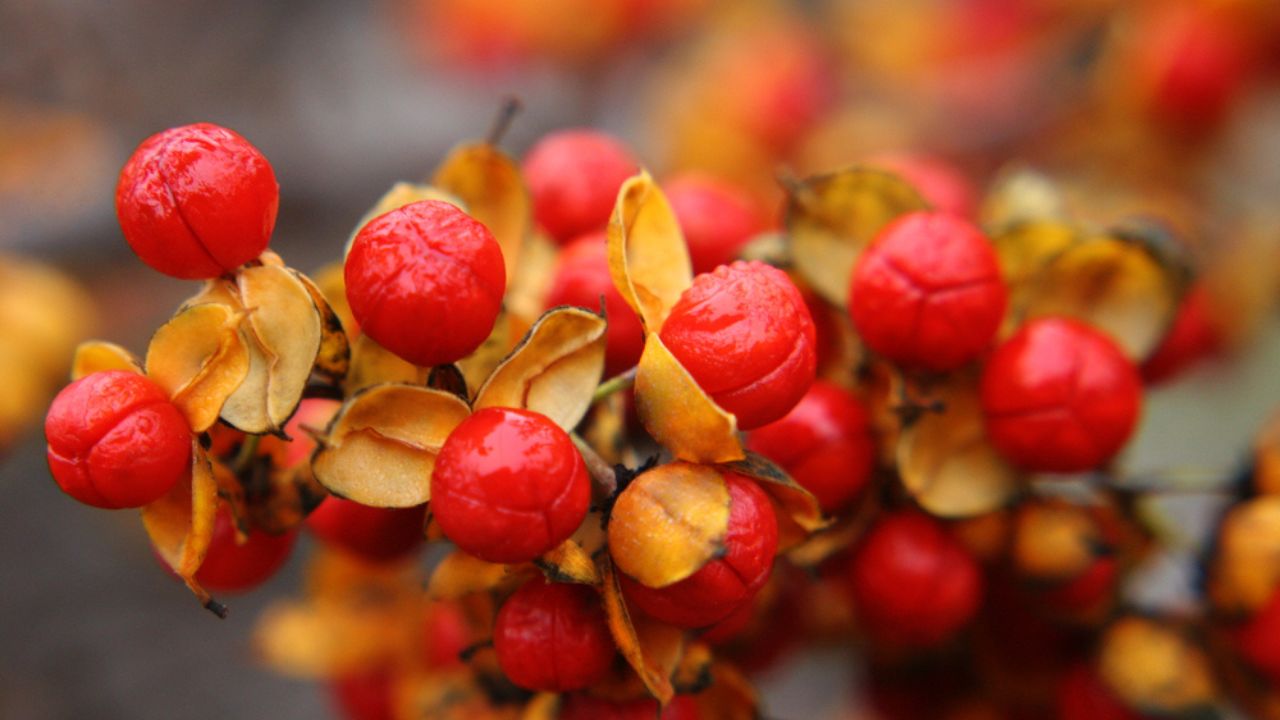
Image Credit: Shutterstock.
Each of the entries below includes identifying characteristics, control methods, and similar native plants. For assistance with controlling large infestations, contact your local Extension Office. First, the Asiatic bittersweet.
A deciduous vine, Asiatic bittersweet climbs trees and sprawls over the forest floor. The small, round, alternate leaves have wavy margins and pointed tips. In the fall, they turn yellow. Greenish-yellow flowers bloom in clusters in the leaf axils, and yellow fruits split to reveal red-orange seeds on female plants.
Pull up seedlings when the soil is moist and cut larger vines, applying herbicide to the stumps.
Grow American bittersweet (C. scandens) instead, or a native grape like fox grape (Vitis labrusca).
2. Autumn Olive (Elaeagnus umbellata)
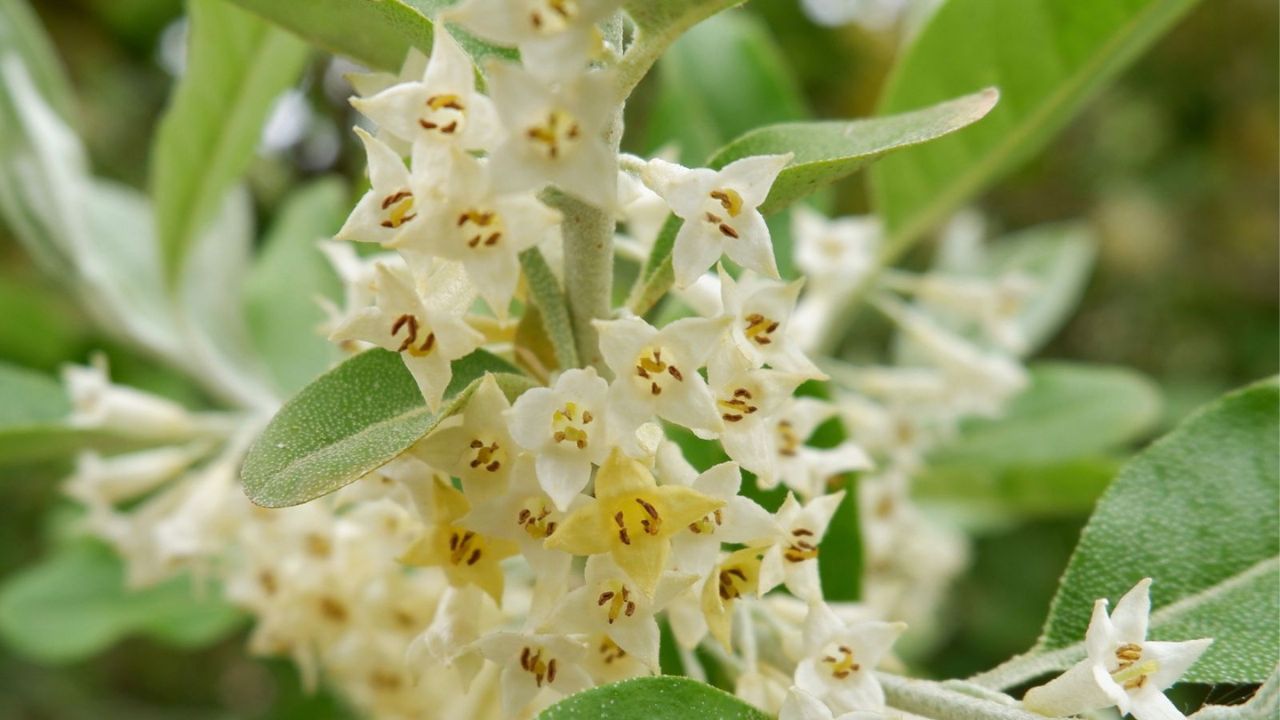
Image Credit: Depositphotos.
Autumn olive has simple, alternate leaves with wavy edges and tapered ends. Look for silvery scales on the undersides of leaves and on twigs. The fragrant, tubular flowers range from white to light yellow, and the red, oval berries have pale specks.
Pull seedlings and cut large shrubs, painting the stumps with herbicide. Repeated mowing may also be effective over several years.
Native red chokeberry (Aronia arbutifolia) has similar red berries, and native shrubby willows, like pussy willow (Salix discolor), have similar foliage.
3. Black Swallowwort (Cynanchum louiseae)

Image Credit: Shutterstock.
Black swallow-wort is a thin, herbaceous, twining vine that grows up to six feet long. The leaves have a broad base and tapered point, giving them a lance shape or elongated heart shape. The dark purple or brown, star-shaped flowers bloom in loose clusters and smell like rotting fruit. The slender green seed pods open to release brown, airborne seeds.
Dig up the entire root crown to remove small numbers of black swallowwort. Larger infestations require herbicide.
Plant native vines instead, like virgin’s bower (Clematis virginiana) or Virginia creeper (Parthenocissus quinquefolia).
4. Burning Bush (Euonymus alatus)

Image Credit: Shutterstock.
Burning bush, or winged euonymus, is a deciduous shrub that creates dense thickets up to 15 feet high. It gets its common name from its vibrant red fall color and the corky wings that often grow along the stems. The simple, elliptical leaves have finely serrated margins, and the tiny, green-to-yellow flowers bloom in small clusters. The fruits split open to reveal red-orange seeds.
Pull or dig small plants and use cut-stump herbicide application on larger shrubs.
Lovely native alternatives include maple-leaved viburnum (Viburnum acerifolium) and highbush blueberry (Vaccinium corymbosum).
5. Common and Glossy Buckthorn (Rhamnus cathartica and Frangula alnus)
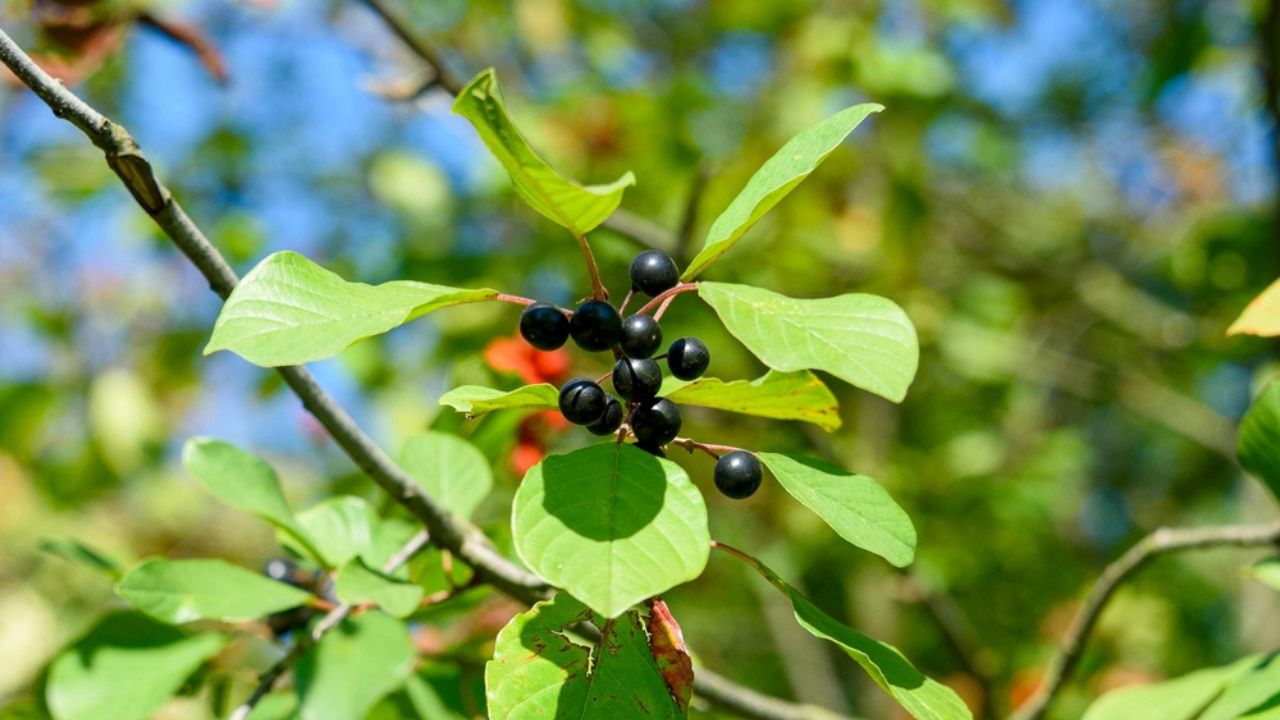
Image Credit: Shutterstock.
A shrub or small tree, glossy buckthorn has glossy, alternate, elliptical leaves about two to four inches long. The small, white to yellow flowers are followed by berries that ripen from green to red or dark purple, sometimes with both colors appearing on the same bush. Common buckthorn has small spines at the ends of twigs and only black berries.
Seedlings may be pulled by hand, while large shrubs should be cut and herbicide applied to the stumps.
Native black chokeberry (Aronia melanocarpa) has a similar appearance, as does alder-leaved buckthorn (Rhamnus alnifolia).
6. Common Reed (Phragmites australis)
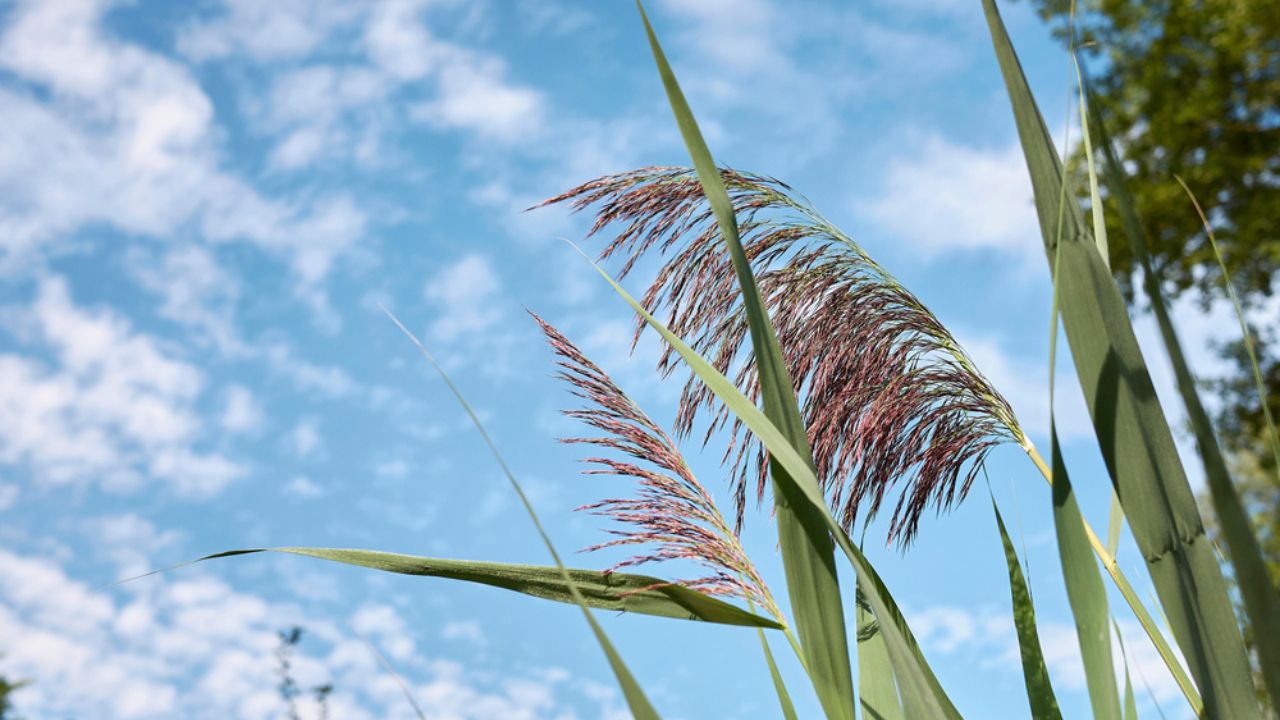
Image Credit: Shutterstock.
An exceptionally tall perennial grass, common reed forms dense stands up to 13 feet high. Its long, alternate leaves taper to a point and range from yellow-green to blue-green. They grow from nodes on round, hollow stems. The seeds’ heads emerge purplish-brown and become tan and fluffy in the fall.
Small infestations can be cut every two weeks for several years. For quicker removal, try the “cut-drip” method of herbicide application.
Though significantly shorter, American reed (Phragmites americanus) looks very similar, and wool grass (Scirpus cyperinus) has unique, woolly seed heads.
7. Garlic Mustard (Alliaria petiolata)
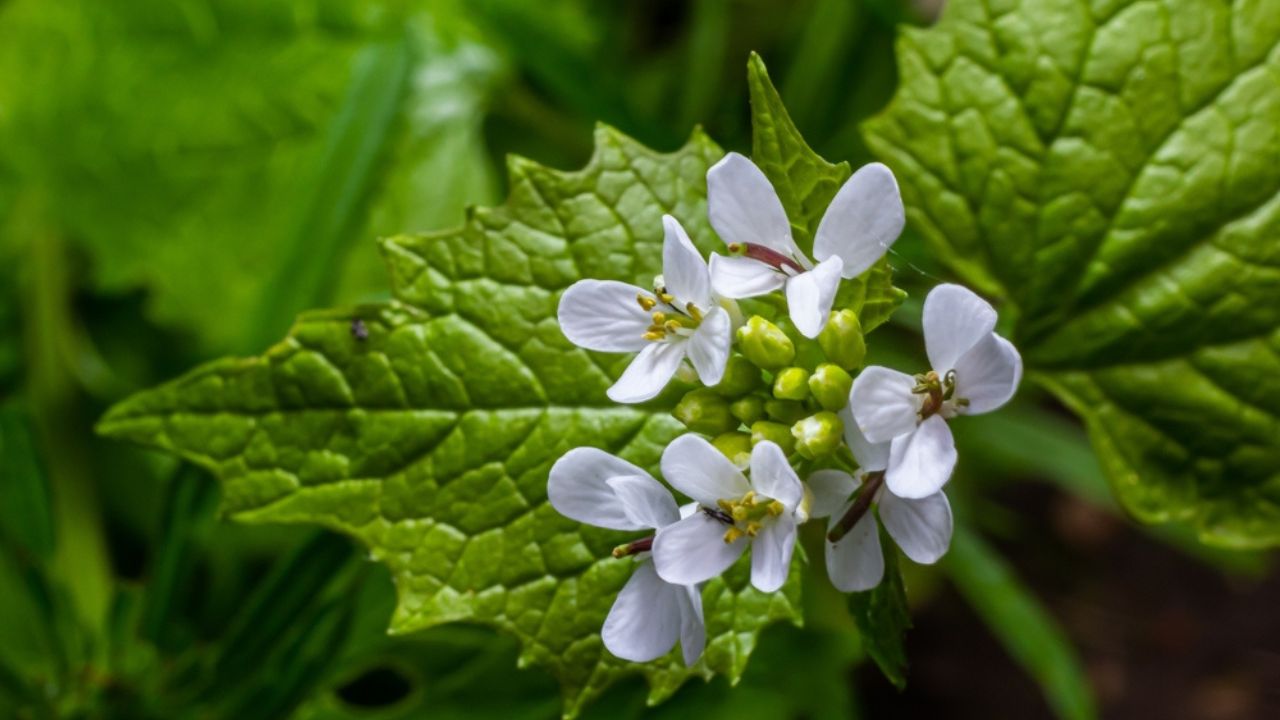
Image Credit: Shutterstock.
A biennial, garlic mustard appears as low rosettes of coarsely toothed, heart-shaped leaves in the first year. It grows up to three feet tall in its second year, with tiny white flowers at the top in spring, followed by slender, upright seed pods. The edible leaves smell like garlic when crushed.
Pull and bag garlic mustard before seed pods appear.
Wild violets (Viola spp.) resemble garlic mustard rosettes, and foamflower (Tiarella cordifolia) has heart-shaped foliage and pale spring flowers.
8. Honeysuckle (Lonicera maackii, L. morrowii, L. tatarica, L. x bella)

Image Credit: Shutterstock.
Invasive shrubby honeysuckles have opposite, ovate leaves with entire margins and, depending on the species, hairy undersides. The fragrant, tubular blossoms may be white, yellow, or pink and are followed by tiny red berries. Large twigs have a hollow center, distinguishing them from native species.
Pull small plants, and for large shrubs, use cut-stump herbicide application, or apply foliar spray in the fall after most native plants have dropped their leaves.
Native honeysuckles include fly-honeysuckle (L. canadensis) and mountain honeysuckle (L. villosa).
9. Japanese Barberry (Berberis thunbergii)

Image Credit: Depositphotos.
Japanese barberry is a small deciduous shrub with many branches and small spines at the leaf axils. The small, alternate, ovate leaves taper to the base and grow in clusters. Tiny, pale yellow flowers hang beneath the stems, as do the red, oval berries that follow.
Hand pull small numbers of seedlings, or apply foliar herbicide in early spring before native plants leaf out.
Red chokeberry (Aronia arbutifolia) and dwarf serviceberry (Amelanchier spicata) share similar characteristics with Japanese barberry
10. Japanese Knotweed (Fallopia japonica)
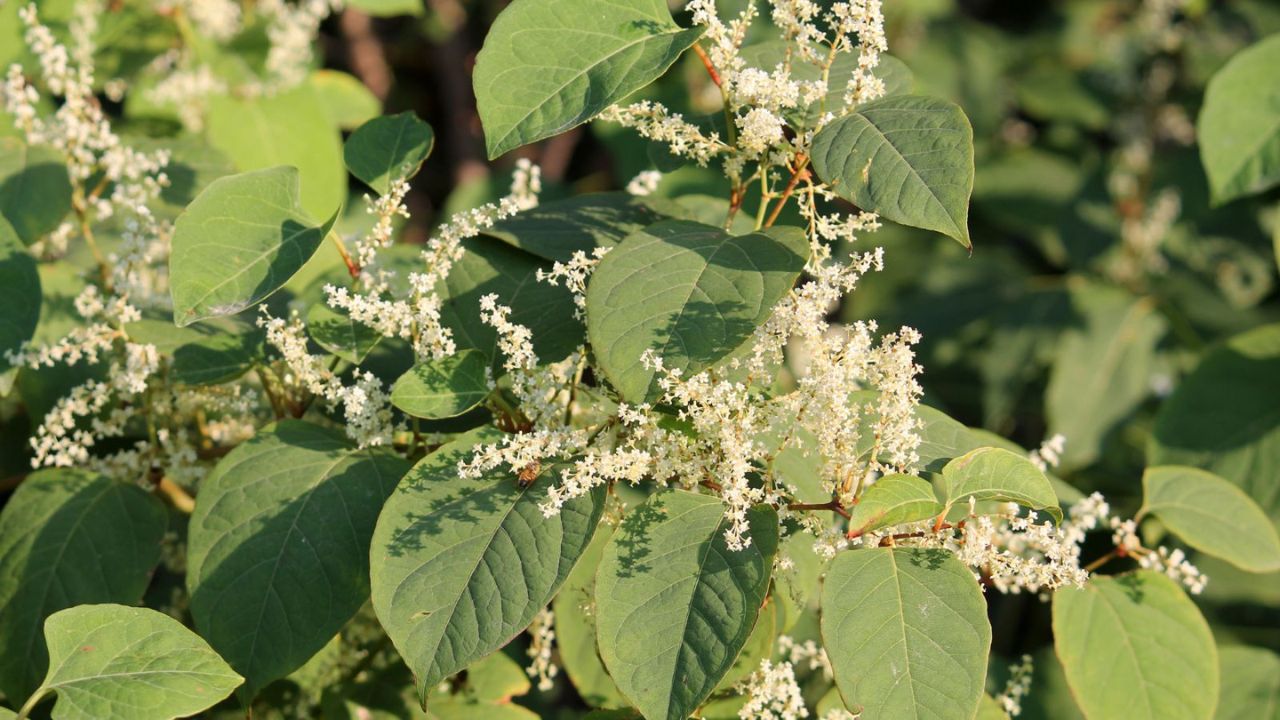
Image Credit: Depositphotos.
A tall perennial herb, Japanese knotweed forms dense stands that reach up to 10 feet. The entire, alternate leaves have a flat base and taper abruptly to a point at the end. Many spikes of tiny, white flowers bloom along the stems, followed by small, dangling, winged seeds.
Mechanical control methods require persistence over many years. Stem injection or cut-drip herbicide applications are more effective on small populations.
Plant tall native herbaceous plants, like spikenard (Aralia racemosa) or milkweed (Asclepias syriaca) instead.
11. Multiflora Rose (Rosa multiflora)
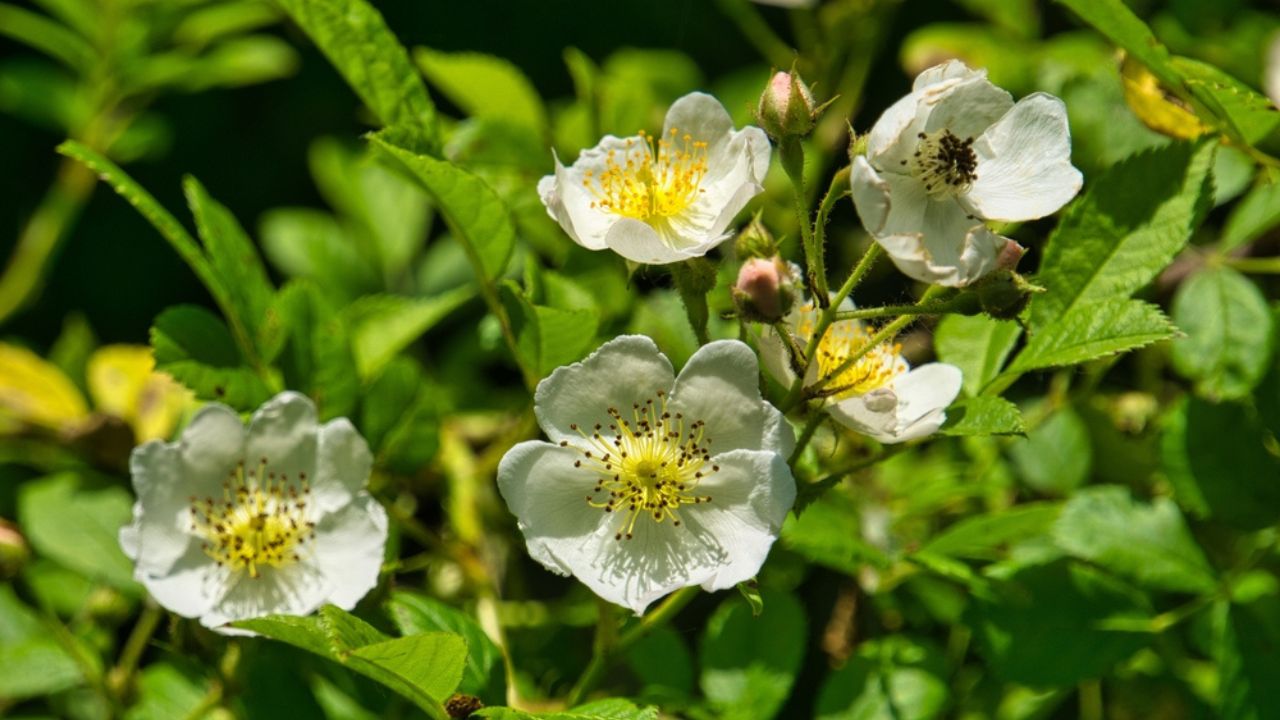
Image Credit: Shutterstock.
The arching canes of multiflora rose can reach up to 20 feet. The pinnately compound leaves each have five to 11 small, toothed leaflets. Look for fringe at the base of the petioles to distinguish them from native roses. Clusters of small, white to pink flowers bloom at the ends of branches, followed by tiny red rose hips.
Pull small plants by hand and cut large plants, applying herbicide to the stumps. Native roses include the meadow rose (R. blanda) and Virginia Rose (R. virginiana).
Once you learn to identify an invasive plant, it’s difficult to forget — which makes it easy to add new species to your repertoire! Thank you for taking a step toward protecting Maine’s wild areas from invasive species.

